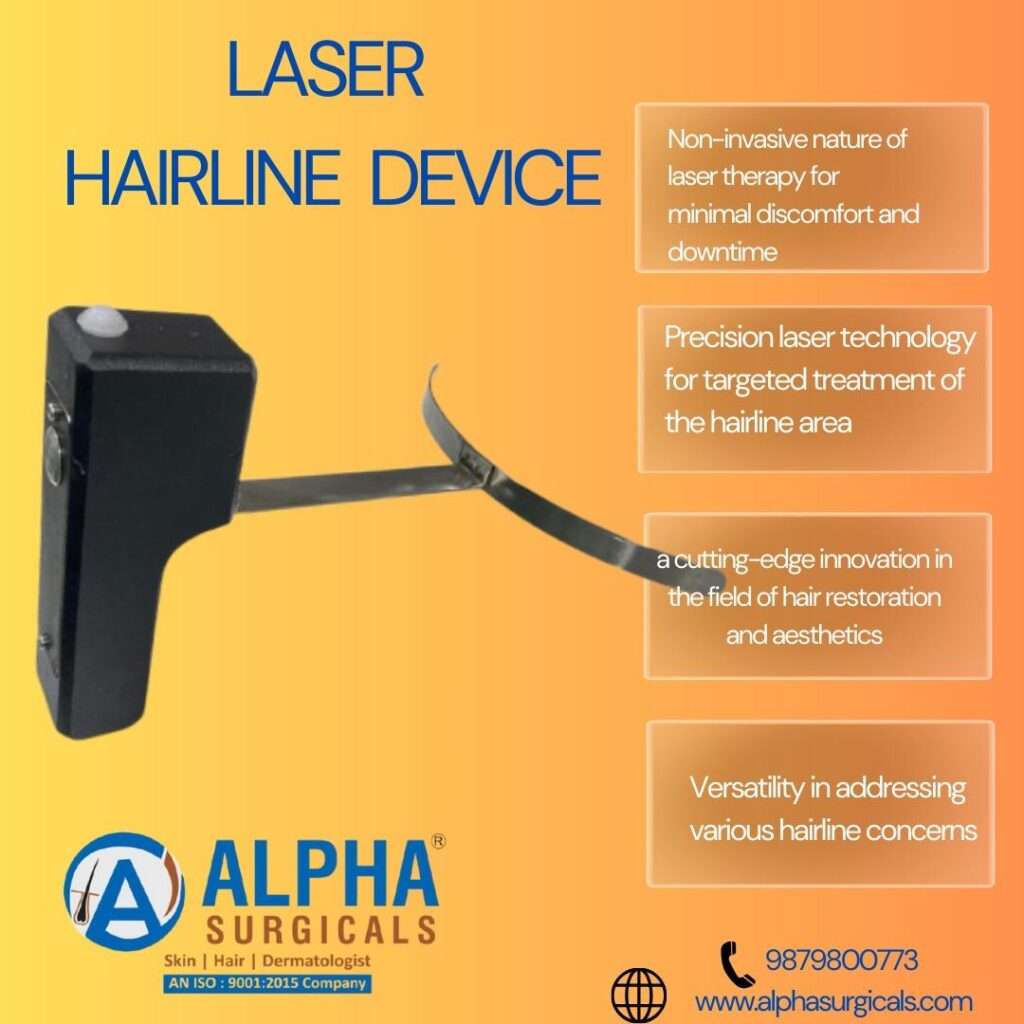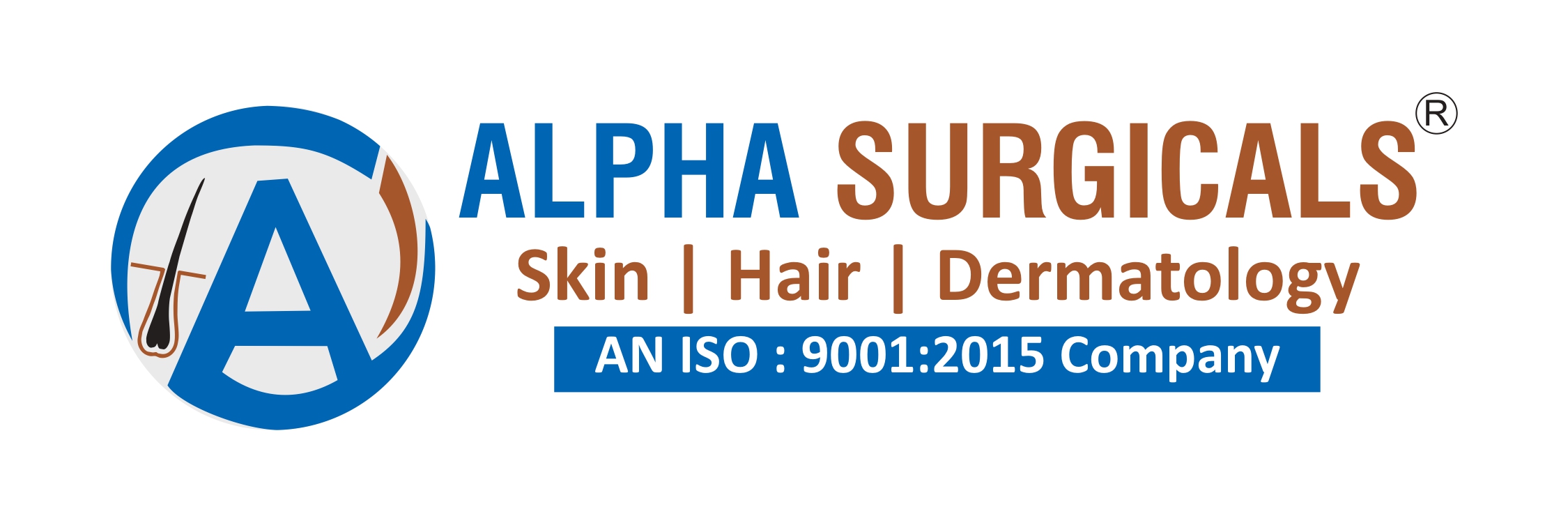Introduction
Designing a natural-looking hairline is both an art and a science. Every dermatosurgeon knows the challenge — achieving symmetry, proportion, and realism while maintaining the individuality of each patient. Traditional marking techniques, though widely used, often rely on manual precision and artistic judgment that can vary between surgeons.Enter the laser hairline device — a revolutionary advancement in hair restoration technology. Built on the principles of digital precision and aesthetic science, it offers surgeons a way to design, visualize, and execute natural hairlines with near-perfect accuracy.
In this guide, we’ll explore how laser-guided hairline systems are transforming modern transplant practices, enhancing both patient satisfaction and surgical outcomes.
The Hairline Challenge: Why Traditional Methods Fall Short
Creating a flawless hairline isn’t just about placing grafts — it’s about crafting confidence. Traditional freehand marking techniques can lead to:
- Asymmetrical designs due to human error
- Inconsistent follicular angles causing unnatural flow
- “Pluggy” or straight-line looks that lack realism
- Variable density mapping that impacts visual fullness
In an age where patients expect artistic perfection, mechanical approaches alone no longer suffice. Surgeons need technology that merges aesthetic intelligence with surgical precision.
What Is a Laser Hairline Device?
A laser hairline device is a digital marking system that projects an adjustable, high-precision laser pattern directly onto the patient’s scalp. It enables dermatosurgeons to design hairlines with millimeter-level accuracy — aligning perfectly with natural anatomical and proportional standards.
Core Features
- Laser projection grid: Defines boundaries and symmetry
- Facial recognition sensors: Analyze bone structure and proportions
- Digital mapping software: Customizes hairline curvature and density
- Real-time adjustments: Enables design refinement before grafting
These devices are FDA-approved and globally recognized for improving hair restoration outcomes through controlled precision and reproducibility.

The Science Behind Laser Hairline Precision
Golden Ratio in Hairline Design
The human face follows mathematical harmony known as the Golden Ratio (1.618:1). Laser devices integrate this principle, analyzing facial contours to project the most naturally balanced hairline — tailored to ethnicity, gender, and age.
Follicular Angle and Direction Mapping
Each follicle has a natural growth angle. Laser hairline devices calculate and guide directional alignment, ensuring that transplanted grafts follow the scalp’s natural orientation — producing lifelike density and movement.
Digital Simulation Capabilities
Before a single graft is placed, surgeons and patients can visualize the predicted post-transplant appearance through 3D digital simulations. This bridges the communication gap, aligning patient expectations with achievable outcomes.
How Laser Hairline Devices Work: Step-by-Step
1. Facial Analysis
AI-based sensors capture and assess facial landmarks — forehead size, bone curvature, and existing hair density — to create a proportional template.
2. Custom Hairline Design
Using the integrated software, the surgeon adjusts hairline shape, density zones, and symmetry while considering the patient’s facial type and preferences.
3. Laser Projection & Marking
The final design is projected as a visible laser grid on the scalp. The markings can be temporarily transferred using sterile marking ink for surgical guidance.
4. Surgical Execution
During FUE or FUT procedures, surgeons follow these markings to implant grafts precisely, ensuring even distribution and optimal angle for natural outcomes.
Key Benefits of Laser Hairline Devices
1. For patients
- Perfectly natural-looking hairlines
- Predictable, reproducible results
- Shorter consultation times
- Enhanced satisfaction and trust
2. For surgeons
- Dramatic reduction in design time
- Improved consistency and precision
- Better patient communication with digital previews
- Professional edge through advanced technology
3. For clinics
- Strong marketing differentiation
- Higher conversion rates due to trust and transparency
- Efficient workflow integration
- Premium service positioning
Laser Hairline Device vs. Traditional Marking
| Feature | Traditional Methods | Laser Hairline Device |
|---|---|---|
| Accuracy | Manual & variable | Digital & exact |
| Design Time | 15–30 mins | 5–10 mins |
| Result Consistency | Surgeon-dependent | Uniform & repeatable |
| Visualization | None | Real-time 3D preview |
| Patient Confidence | Moderate | Very high |
Choosing the Right Laser Hairline Device
When selecting a device for your dermatology or hair restoration clinic, prioritize:
- Facial mapping accuracy (AI-assisted)
- Software customization features
- Safety certifications (FDA/CE)
- Service & calibration support
Leading devices in 2025 integrate augmented reality overlays, AI prediction models, and cloud-based patient data synchronization — combining innovation with convenience.
Training and Implementation
While the system is intuitive, proper training ensures you utilize its full potential. Alpha Surgicals provides:
- Comprehensive onboarding sessions
- Hands-on workshops for dermatosurgeons
- Maintenance & calibration support
The Future of Hair Restoration Technology
The next era of hair restoration is merging AI, robotics, and predictive modeling. Soon, surgeons will design and execute entire procedures guided by automated mapping and growth analysis tools, ensuring unmatched outcomes in natural hairline restoration.
Conclusion
Precision is the new benchmark in aesthetic surgery — and laser hairline devices are leading the revolution. For dermatosurgeons, they provide the missing bridge between artistry and scientific accuracy.
By embracing this next-generation hair restoration technology, practitioners not only elevate patient outcomes but redefine what’s possible in cosmetic dermatology.
Alpha Surgicals, India’s trusted name in surgical excellence, empowers clinicians with cutting-edge tools that combine innovation, reliability, and precision — helping every patient walk away with confidence that looks natural.
👉 Ready to see precision in action?
Schedule a demo with Alpha Surgicals or explore our latest hair restoration innovations.
FAQ Section
1. How much does laser hairline restoration cost?
Costs vary by clinic, but using a laser device can improve outcome predictability and reduce revision expenses.
2. Is the procedure painful?
No. The laser hairline device only assists in marking and visualization — it’s completely non-invasive.
3. How long does the procedure take?
Design and marking take 5–10 minutes with a laser device, significantly less than manual methods.
4. Are results permanent?
Yes. Once grafts grow naturally, the results are long-lasting with proper post-care.
5. Can it fix previous bad transplants?
Yes. Laser-guided designs can help correct asymmetrical or unnatural prior hairlines.
6. Is it safe?
Completely. Devices come with FDA/CE safety approvals and low-energy laser beams that are harmless to skin.
7. What training is needed?
Most systems require a short workshop or online certification, easily integrated into practice.
8. Can I use it for female hairline restoration?
Absolutely — the software supports gender-specific and ethnic customization.
9. Does it increase surgical costs?
Slightly, but the return on investment from improved patient satisfaction and referrals is substantial.
10. Is financing available?
Yes, Alpha Surgicals offers flexible purchase and leasing plans for qualified clinics.
Follow us at : https://www.instagram.com/alphasurgicals?igsh=cTdjYWNtaXkxazlr
Visit us at : https://alphasurgicals.com/store/
